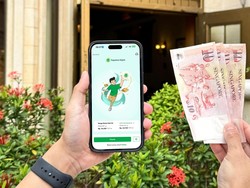views
In recent years, Indonesia's Quick Response Code Indonesian Standard (QRIS) has emerged as a significant player in the digital payment landscape. Designed to unify various payment systems under a single QR code, QRIS aims to promote financial inclusion and streamline transactions across the archipelago. However, its rapid adoption and expansion have raised concerns in the United States, particularly regarding its implications for American financial interests and global economic dynamics.
Understanding QRIS
Launched in August 2019 by Bank Indonesia and the Indonesian Payment System Association (ASPI), QRIS was developed to standardize QR code payments across the country. By integrating various digital payment platforms, QRIS facilitates seamless transactions for consumers and merchants alike. As of October 2023, QRIS had been implemented by 29.6 million merchants, with 92% being micro, small, and medium enterprises (MSMEs), and had 43.44 million users.
U.S. Concerns: Trade Barriers and Market Access
The United States Trade Representative (USTR) has identified QRIS as a potential trade barrier. The primary concern revolves around the limited participation of foreign entities in Indonesia's payment ecosystem. Specifically, U.S. companies like Visa and Mastercard have expressed apprehension about being sidelined in favor of domestic systems, potentially restricting their market access and competitiveness.
Moreover, the USTR has highlighted regulations that cap foreign ownership at 20% for companies seeking switching licenses within Indonesia's National Payment Gateway (GPN). This limitation, coupled with requirements for foreign companies to partner with local firms to process domestic payments, is viewed as a hindrance to fair competition and an impediment to the free flow of digital financial services.
Digital Sovereignty and Economic Independence
Indonesia's push for digital sovereignty is at the heart of the QRIS initiative. By developing and promoting a national payment system, Indonesia aims to reduce reliance on foreign financial infrastructures and assert greater control over its economic data and transactions. This move aligns with a broader trend among emerging economies seeking to bolster their digital autonomy and protect sensitive financial information from external entities.
QRIS's expansion into cross-border transactions, particularly within Southeast Asia, further underscores Indonesia's ambitions. By facilitating QRIS payments in countries like Thailand, Singapore, and Malaysia, Indonesia is not only enhancing regional financial integration but also challenging the dominance of traditional global payment networks.
Implications for U.S. Financial Interests
The rise of QRIS presents several challenges for U.S. financial institutions:
-
Market Share Erosion: As QRIS gains traction, American payment giants risk losing their foothold in one of Southeast Asia's largest economies.
-
Data Access Restrictions: With QRIS centralizing transaction data within Indonesia, U.S. companies may face limitations in accessing valuable consumer insights, affecting their ability to tailor services and strategies.
-
Precedent for Other Nations: Indonesia's model could inspire other countries to develop similar systems, potentially leading to a fragmented global payment landscape less favorable to U.S. interests.
Balancing National Interests and Global Trade Norms
While Indonesia's pursuit of digital sovereignty is understandable, it raises questions about adherence to international trade norms and the principles of open markets. The challenge lies in balancing national interests with commitments to fair competition and the avoidance of protectionist policies.
For the U.S., engaging in constructive dialogue with Indonesia is crucial. Collaborative efforts could focus on ensuring that QRIS remains interoperable with global systems, allowing for mutual benefits and the preservation of a competitive landscape.
Conclusion
Indonesia's QRIS represents a significant shift in the global digital payment arena, reflecting the country's aspirations for economic independence and technological self-reliance. While it poses challenges for U.S. financial entities, it also offers an opportunity for dialogue and cooperation. By understanding and addressing mutual concerns, both nations can work towards a more inclusive and balanced digital financial ecosystem.












Comments
0 comment